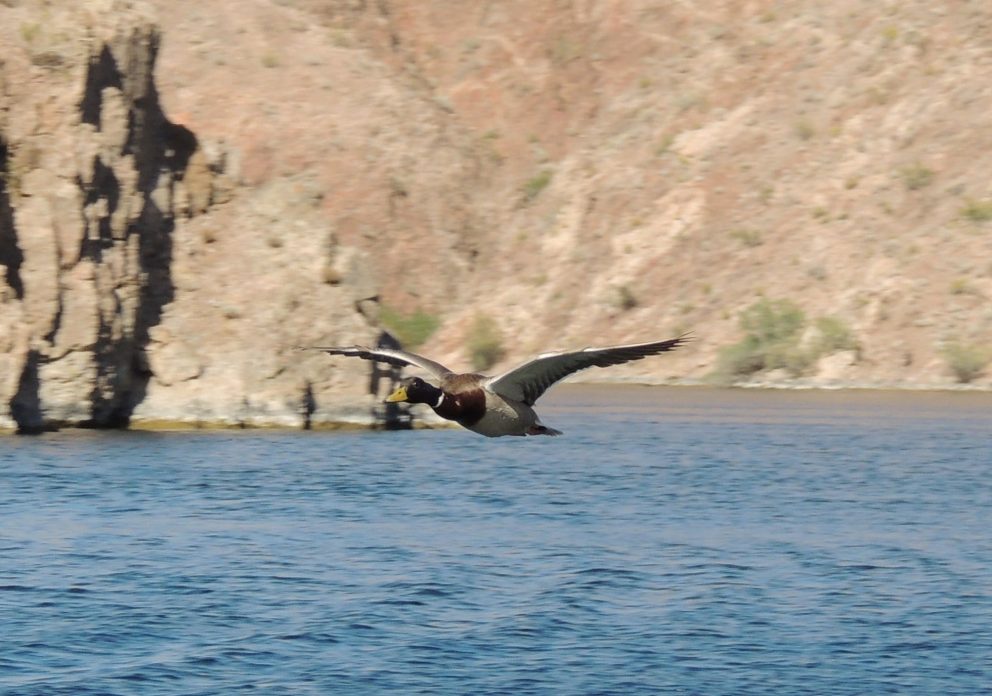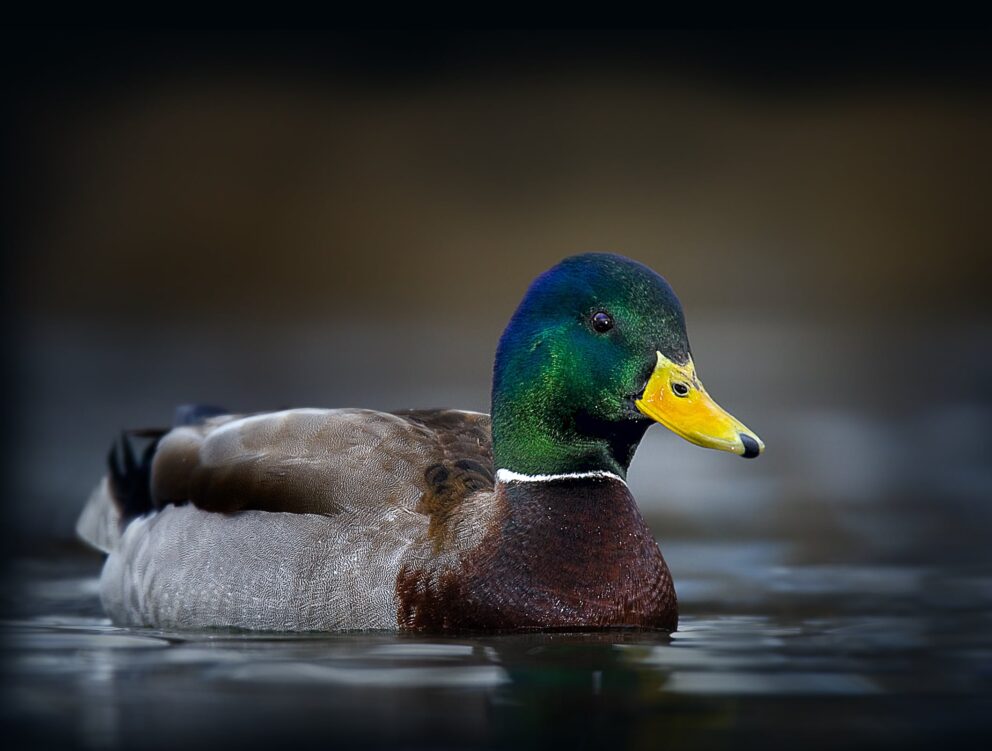- SCIENTIFIC NAME
- Anas platyrhynchos
- CLASSIFICATION
- Bird
- LIFE SPAN
- 5-10 Years
- SIZE
- 19.7-25.6” | 2.2-3lbs
- STATE CONSERVATION STATUS
-
- State Protected
- FEDERAL CONSERVATION STATUS
- Least Concern
- GAME STATUS
- Game
- GAME TYPE
- Waterfowl
- Washoe
- Humboldt
- Pershing
- Churchill
- Mineral
- Lyon
- Douglas
- Carson City
- Storey
- Elko
- Lander
- Eureka
- White Pine
- Esmeralda
- Nye
- Lincoln
- Clark
Habitat & Range
Mallards are not picky about their wetland habitats and can be found on ponds, rivers, streams, urban ponds, lakes, and marshes. The are found throughout Nevada.
- Lakes and reservoirs
- Marsh
- Rivers and streams
Threats
- Drought
- Habitat Loss
- Water Diversion
Natural History
Female Mallards are responsible for nest building and rearing young. They build their nests on the ground near water. Females will lay between nine and thirteen eggs. After hatching the ducklings are mobile and can feed themselves, however, the female is important in helping them locate food.
Mallards are not picky when it comes to their diet. They are omnivores and consume both plant materials and invertebrates. Various aquatic vegetation, worms, insects, spiders, snails, and even human food will round out a Mallard’s diet.
Fun Facts
Mallards can fly 55 miles per hour when migrating, but with a tailwind may be much faster. A jet plane flying over Nevada in 1962 struck a Mallard at 21,000 feet. The highest recorded duck strike in aviation history.














